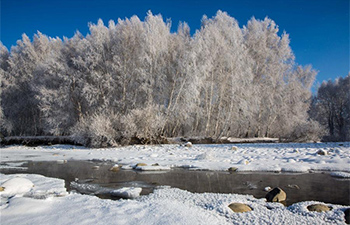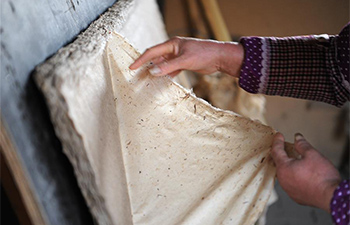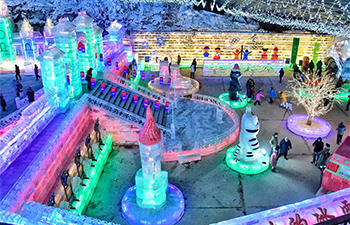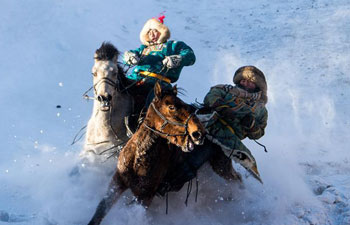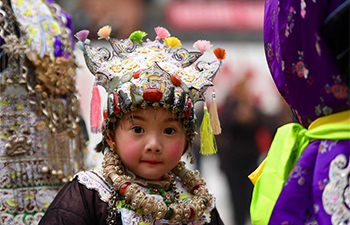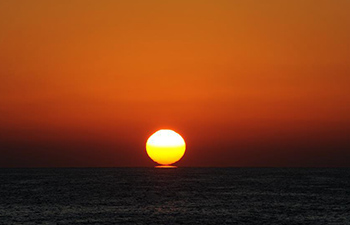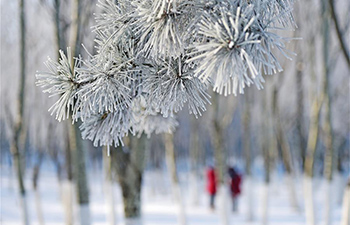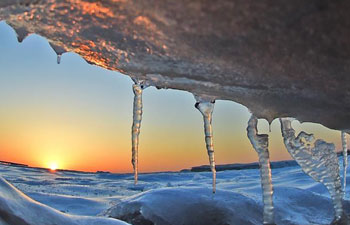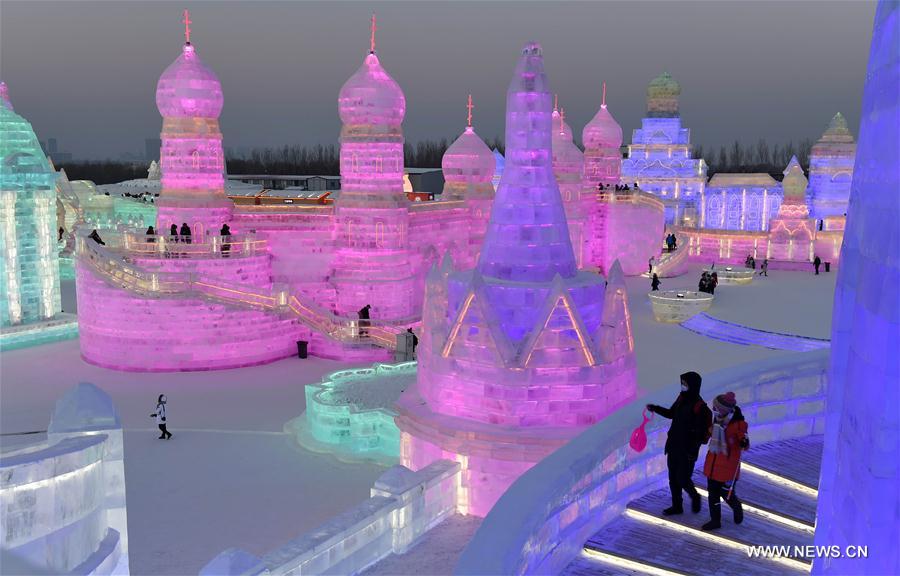
Tourists visit the Ice-Snow World in Harbin, capital of northeast China's Heilongjiang Province, Jan. 5, 2018. The 34th Harbin International Ice and Snow Festival kicked off on Friday. (Xinhua/Wang Jianwei)
HARBIN, Jan. 20 (Xinhua) -- On a bitterly cold morning, the Songhua River flows quietly under a thick layer of ice. Suddenly, the peace is broken by the harsh sound of electric saws.
Liu Changyi and his peers are cutting giant blocks of ice from the frozen river. Each block weighs hundreds of kilograms and has a uniform size of 1.6 meters long, 0.8 meter wide and 40 or 50 centimeters thick.
They use hooks to lift the blocks out of the river and drag them to the shore where forklifts load them onto trucks bound for the winter wonderland of Harbin, capital of northeast China's Heilongjiang Province.
Harbin has gained international attention for its increasingly popular winter extravaganza, the International Ice and Snow Festival, which features massive, elaborate ice sculptures, competitions and winter sports.
Every winter, visitors from home and abroad inundate Harbin, increasing consumption, creating jobs and stimulating the local economy.
"The festival provides jobs for around 1,000 ice cutters like me," said Liu. "I can earn 400 yuan a day."
This winter, the city has seen record numbers of bank transactions and airport passengers. Visitors are finding it difficult to find hotel rooms and taxis.
"We opened the theme park earlier this year," said Jia Lianqi, general manager of Harbin Ice and Snow World, the park at the center of the festival.
"Ice and snow provide an opportunity for people to make money," Jia said. The theme park is only open for two months each year but provides more than 10,000 seasonal jobs for local residents.
As of Thursday, the park had received more than 550,000 visitors, up 20 percent year on year, and earned more than 150 million yuan in revenue since it opened on December 18.
"In the past, businesses were unwilling to invest in Heilongjiang because it was too cold," said an entrepreneur. "But now they are attracted by the ice and snow."
In 1963, Harbin held its first ice lantern fair. Diverse winter activities gradually began to appear since then, and the first ice and snow festival was held in 1985.
Strong consumer demand has boosted the winter tourism in China. A China Tourism Academy report forecast that the number of tourists will grow by 15 percent annually to reach 340 million in winter 2021-2022, from about 170 million in winter 2016-2017.
Winter tourism revenue will increase from about 270 billion yuan in 2016-2017 to 670 billion yuan in 2021-2022, an annual growth rate of 20 percent, the report estimated.
The neighboring provinces of Liaoning, Jilin and Inner Mongolia Autonomous Region are also vigorously promoting winter tourism by setting up ice and snow parks, ski resorts and skating rinks.
"In the peak period, I had work opportunities in three or four cities in Jilin and Liaoning within half a month," said Li Chunyi, an ice sculptor from Harbin.
Sun Zhiming, an economist from the Jilin Provincial Academy of Social Sciences, said winter industries have become a pillar of growth for the economy of northeast China, which has been plagued by a decrease in energy and heavy industries.
Ice and snow cover almost everything in Harbin, but as spring approaches, they will vanish. [ "It will reappear next winter. The natural resources we hated before now create wealth," said Liu.





